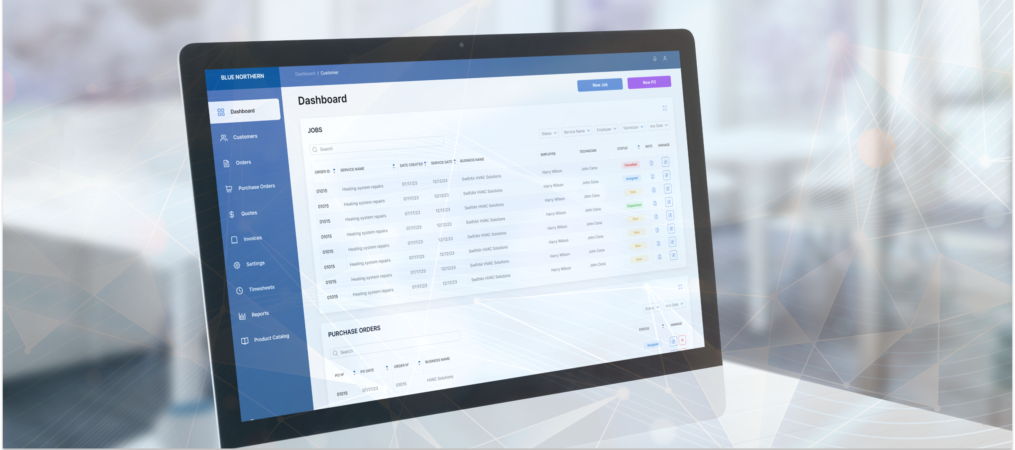
Businesses often reach a point where standard off-the-shelf software no longer fits their needs. Teams waste hours on manual tasks, processes become too complex for basic tools, and organizations end up paying for bloated software features that never get used. Custom web apps development offers a solution—but many businesses hesitate, unsure about costs, timelines, and whether they really need it.
- What is web app development?
- How much does it cost to build a custom web app?
- How long does it take to develop a web application?
- Do I need an app if I have a website?
Each section provides practical insights to help organizations make informed decisions about their next technology investment.
What is Web App Development?
The core components of custom web apps development include:
Front-end Development
Back-end Development
Database Integration
API Connections
With a clear understanding of web applications, the next crucial question involves the investment required. Let's examine the actual costs of custom web apps development.
How Much Does it Cost to Build a Custom Web App?
The cost of custom web apps development varies significantly based on project requirements, complexity, and business objectives. Instead of focusing on specific price ranges, businesses should understand the key factors that influence the overall investment.
Core Components Affecting Development Cost
1. Project Scope and Complexity
| Complexity Level | Examples of Features |
| Basic | User authentication, data management, simple workflows |
| Intermediate | Payment processing, third-party integrations, advanced reporting |
| Complex | Real-time processing, AI/ML capabilities, complex automations |
2. Development Requirements
| Component | Considerations |
| Front-end Development | User interface, responsive design, interactive features |
| Back-end Development | Business logic, data processing, API development |
| Database Architecture | Data structure, storage solutions, security measures |
| Integration Needs | Third-party services, existing systems, API connections |
3. The Development Process
A successful custom web apps development project requires a skilled team of professionals working together. This includes project managers guiding timelines and deliverables, UX/UI designers crafting intuitive interfaces, developers handling implementation, and quality assurance specialists ensuring performance. This collaborative approach, while comprehensive, affects the total investment.
For a detailed breakdown of how these teams work together, read our comprehensive guide on our web apps development process.
Cost Optimization Strategies
A. Phased Development Approach
B. Technology Stack Selection
While understanding the investment is crucial, businesses also need to consider the time required for development. Let's examine realistic project timelines for custom web apps development.
How Long Does it Take to Develop a Web Application?
Fixed-Scope Development Timeline
Best suited for well-defined projects with clear requirements.
| Project Phase | Activities | Typical Duration |
| Requirements Analysis | Business analysis, feature listing, risk assessment, value proposition definition | 2-3 weeks |
| Cost Estimation | Scope documentation, timeline planning, SOW preparation | 1-2 weeks |
| UX/UI Design | User journey mapping, interface design, prototyping | 3-4 weeks |
| Development & QA | Feature implementation, testing cycles, quality assurance | 8-12 weeks |
| User Acceptance | Functionality testing, security verification, usability validation | 2-3 weeks |
| Deployment | Launch strategy, implementation, system migration | 1-2 weeks |
Agile Development Timeline
Ideal for projects requiring flexibility or rapid deployment.
| Phase | Key Activities | Duration |
| Discovery | Market research, feature prioritization, risk analysis | 2 weeks |
| MVP Planning | Core feature identification, prototype development | 2-3 weeks |
| Design Sprints | UX/UI implementation, user testing | 2-3 weeks per cycle |
| Development Iterations | Two-week development sprints, continuous testing | Varies by scope |
| Validation | Feature verification, feedback integration | Ongoing |
Factors Influencing Development Speed:
- Project complexity and scope
- Number of integrations required
- Team availability and resource allocation
- Client feedback turnaround time
- Testing requirements
Understanding these timelines helps evaluate whether investing in custom web apps development aligns with business goals. Let's explore when businesses should choose custom development over standard solutions.
Do I Need an App if I Have a Website?
- Manual processes are slowing down operations
- Staff needs to handle complex data processing
- Business requires specific workflows or automations
- Multiple systems need to work together
- Standard software solutions don't fit unique processes
Let's explore these scenarios in detail to better understand when investing in custom web apps development delivers the most value.
When Custom Web Apps Development Makes Sense

- Business Process Automation: When manual tasks consume significant time, custom web apps development can automate workflows like order processing, inventory management, or customer service operations. This reduces human error and improves operational efficiency.
- Data Management Requirements: Organizations handling complex data relationships, requiring specific calculations, or needing real-time analytics benefit from custom solutions. This includes customer relationship management, financial processing, or inventory tracking systems.
- Integration Needs: Businesses using multiple software tools that need to work together seamlessly often require custom web apps development to create unified systems. This eliminates data silos and reduces duplicate data entry.
- Specific Industry Requirements: Companies in specialized industries often face unique regulatory requirements or operational needs that off-the-shelf solutions cannot adequately address.Armed with this understanding of web applications, costs, timelines, and business needs, organizations can make informed decisions about their technology investments.
Let's summarize the key points to consider.
Conclusion: Making an Informed Decision
Stop Letting Manual Processes Hold Your Business Back

Book a discovery call with us and:
- Get a free assessment of your current operational challenges
- Explore potential custom solutions tailored to your needs
- Receive preliminary recommendations for process optimization
- Learn about implementation approaches that minimize business disruption
- Review similar projects we've completed in your industry










